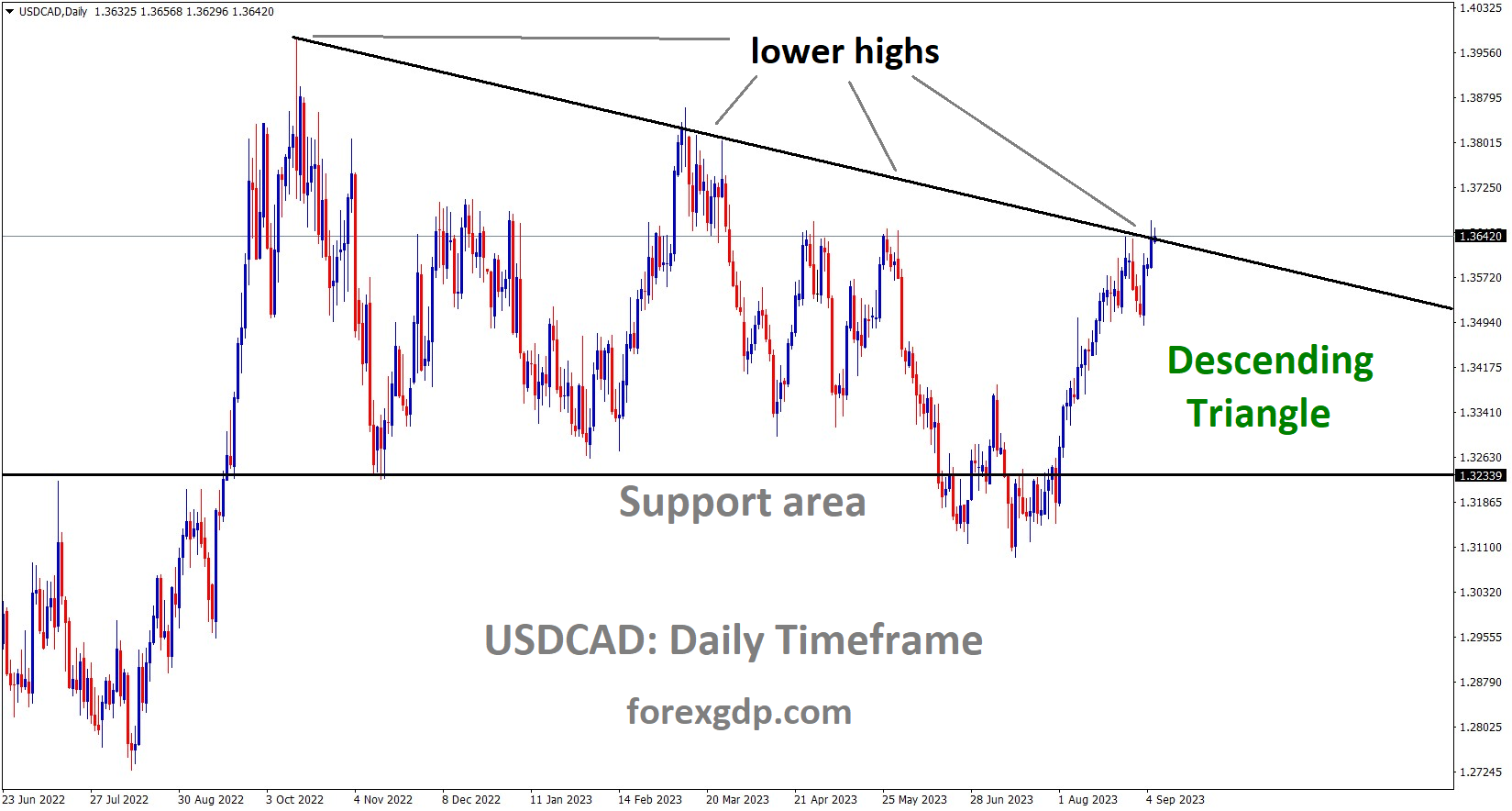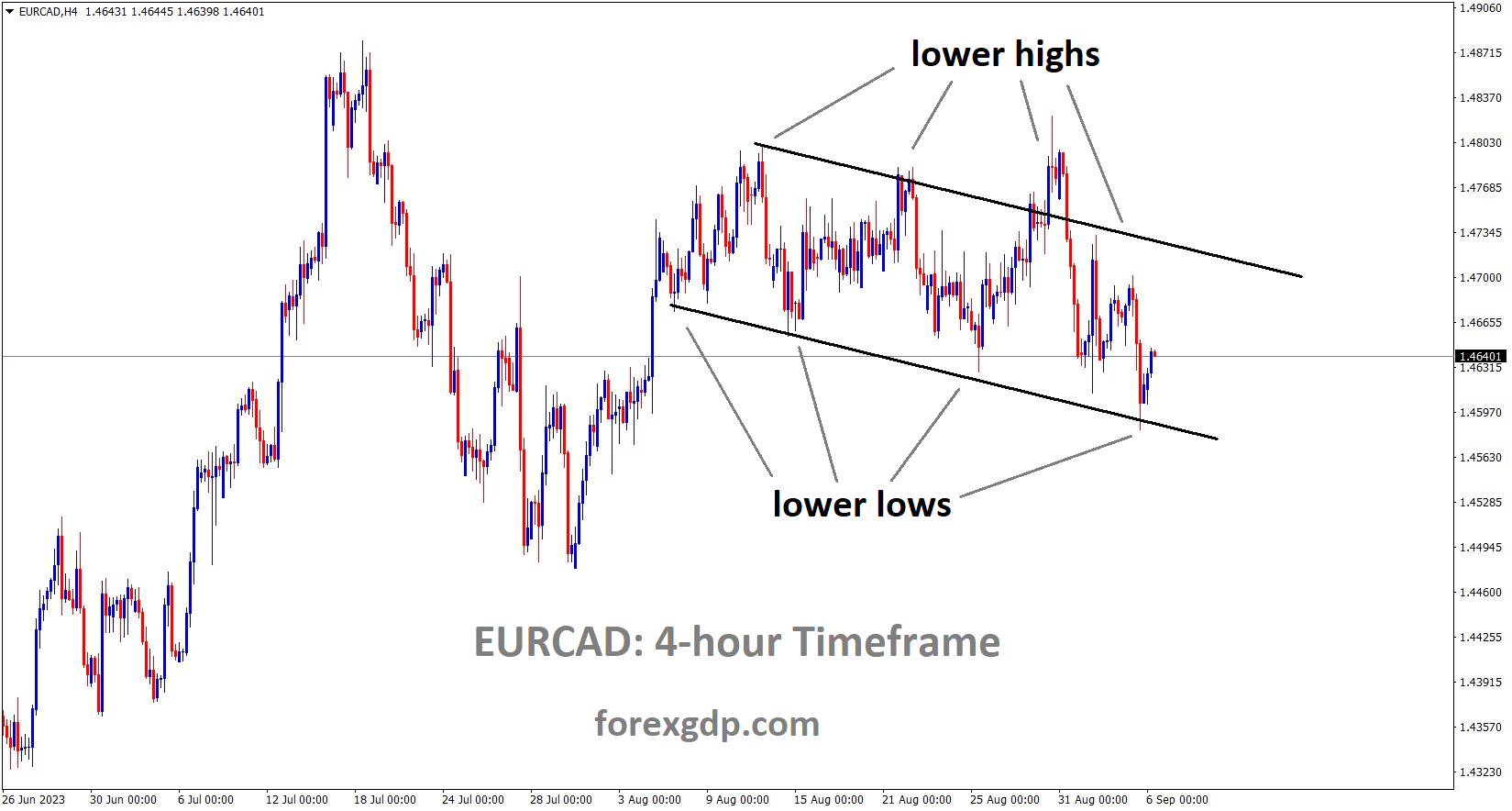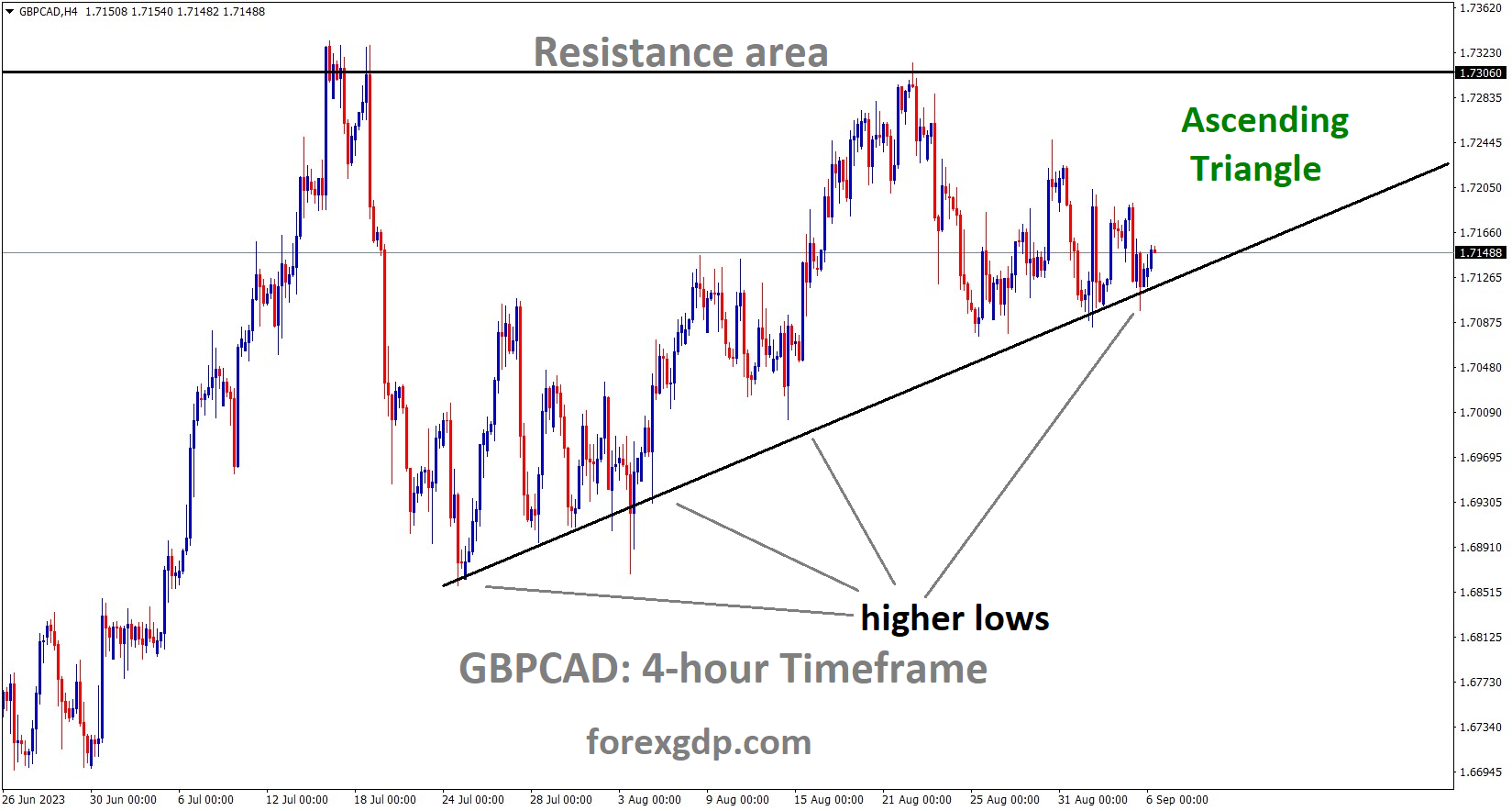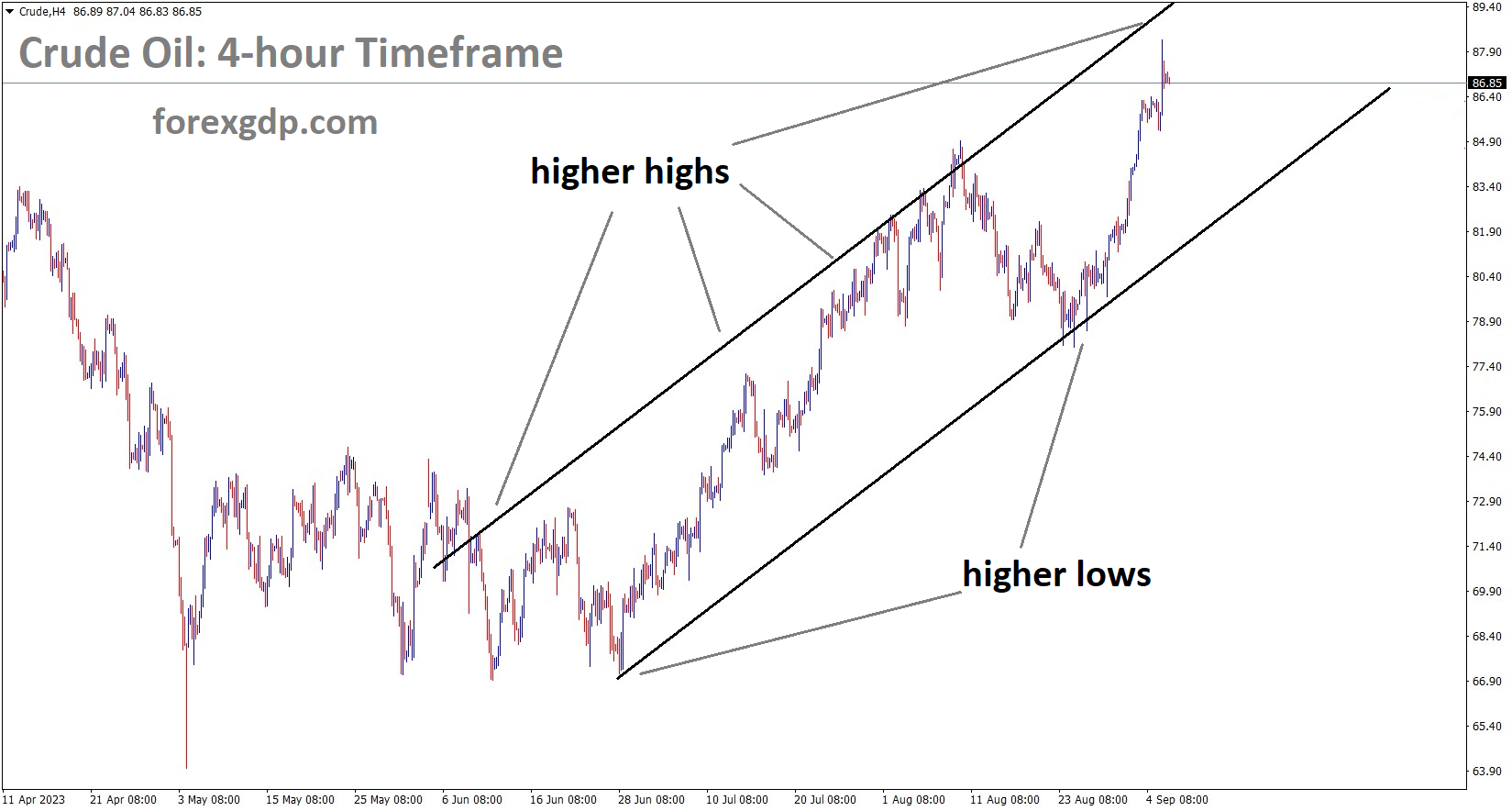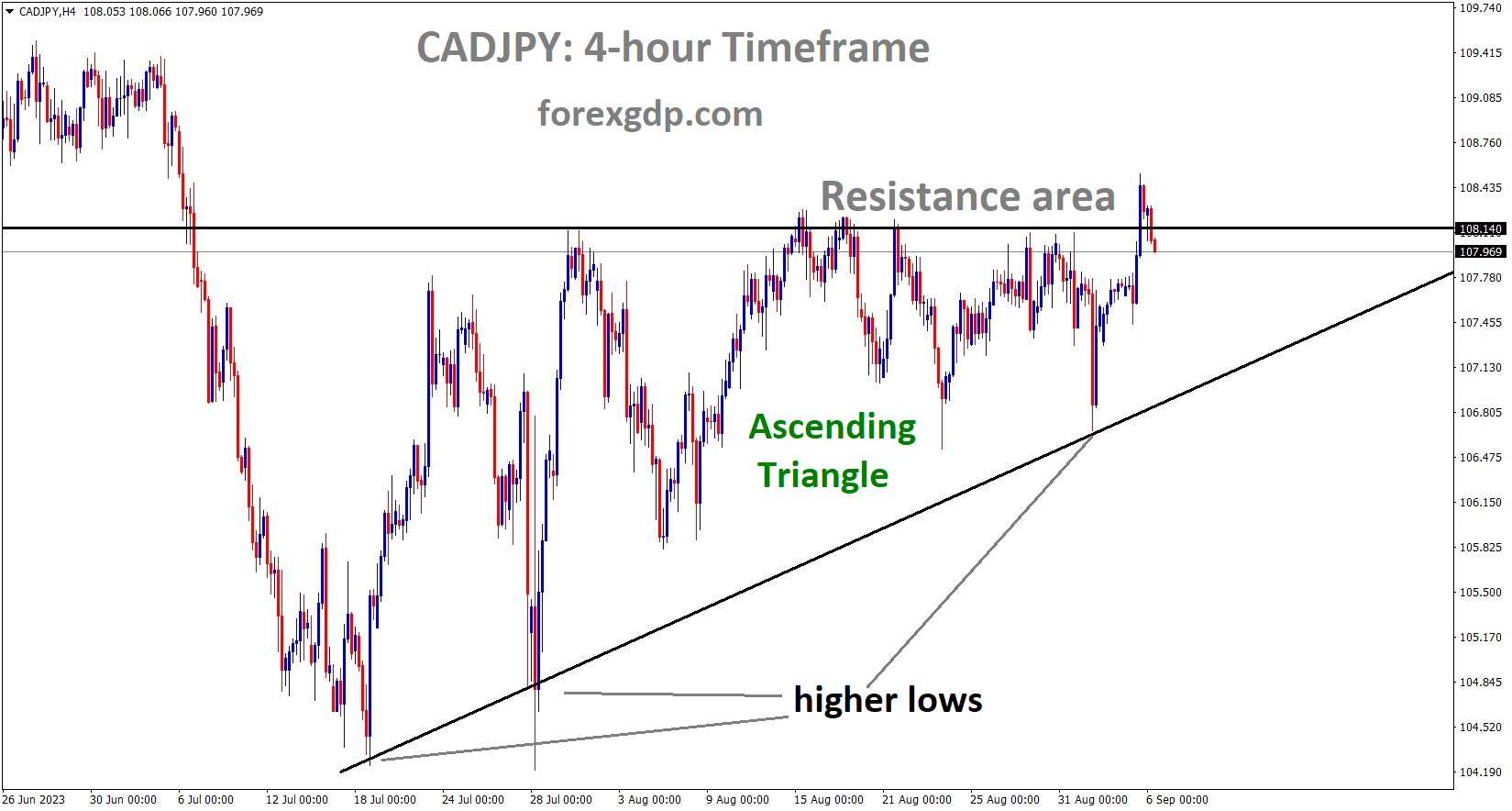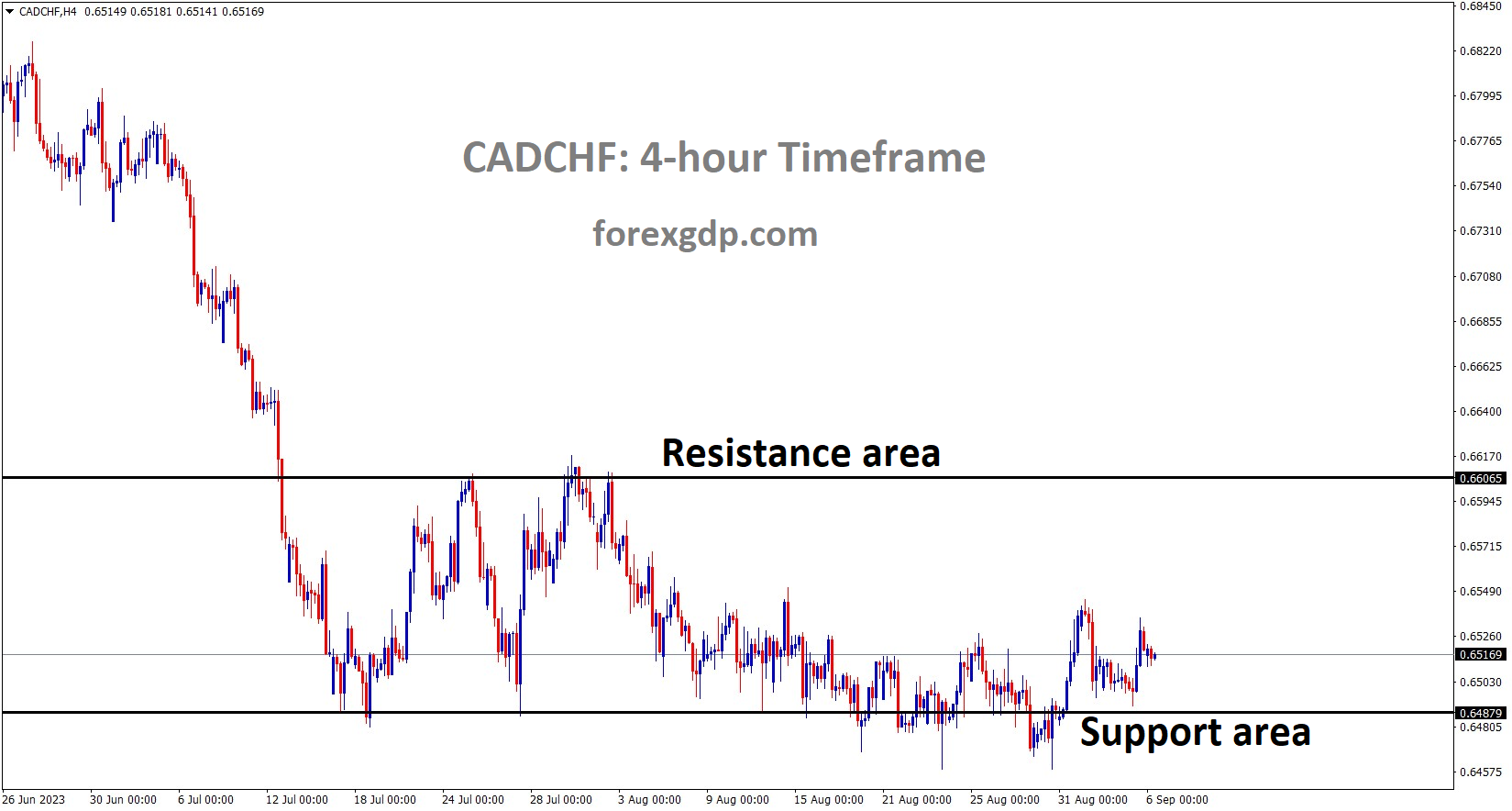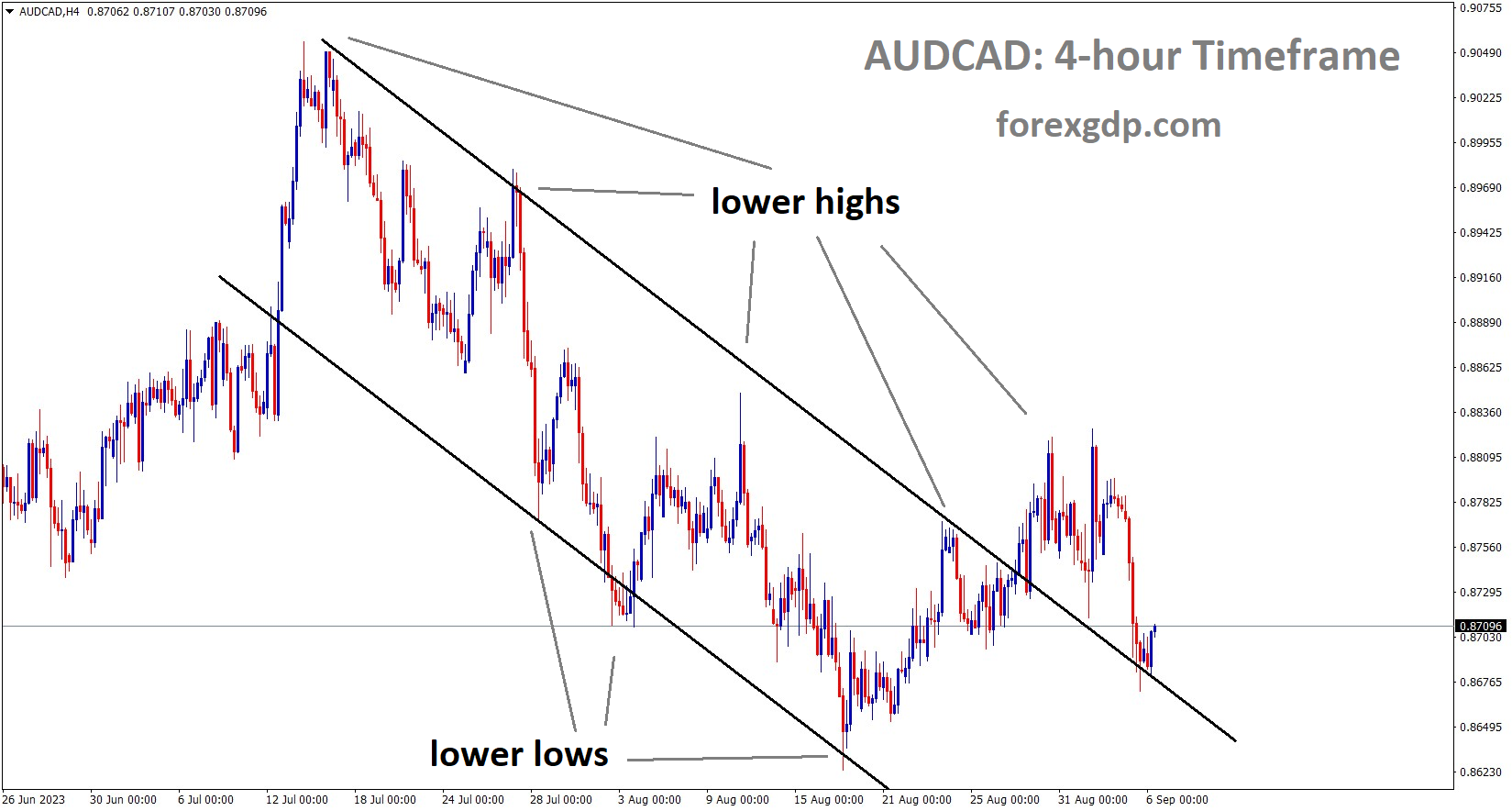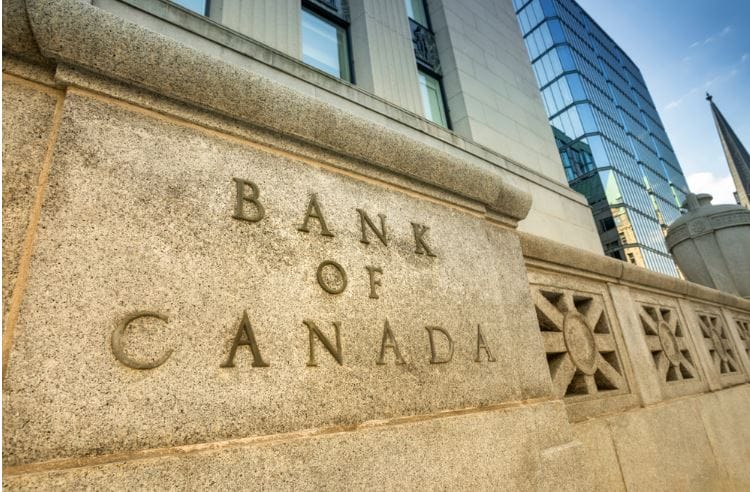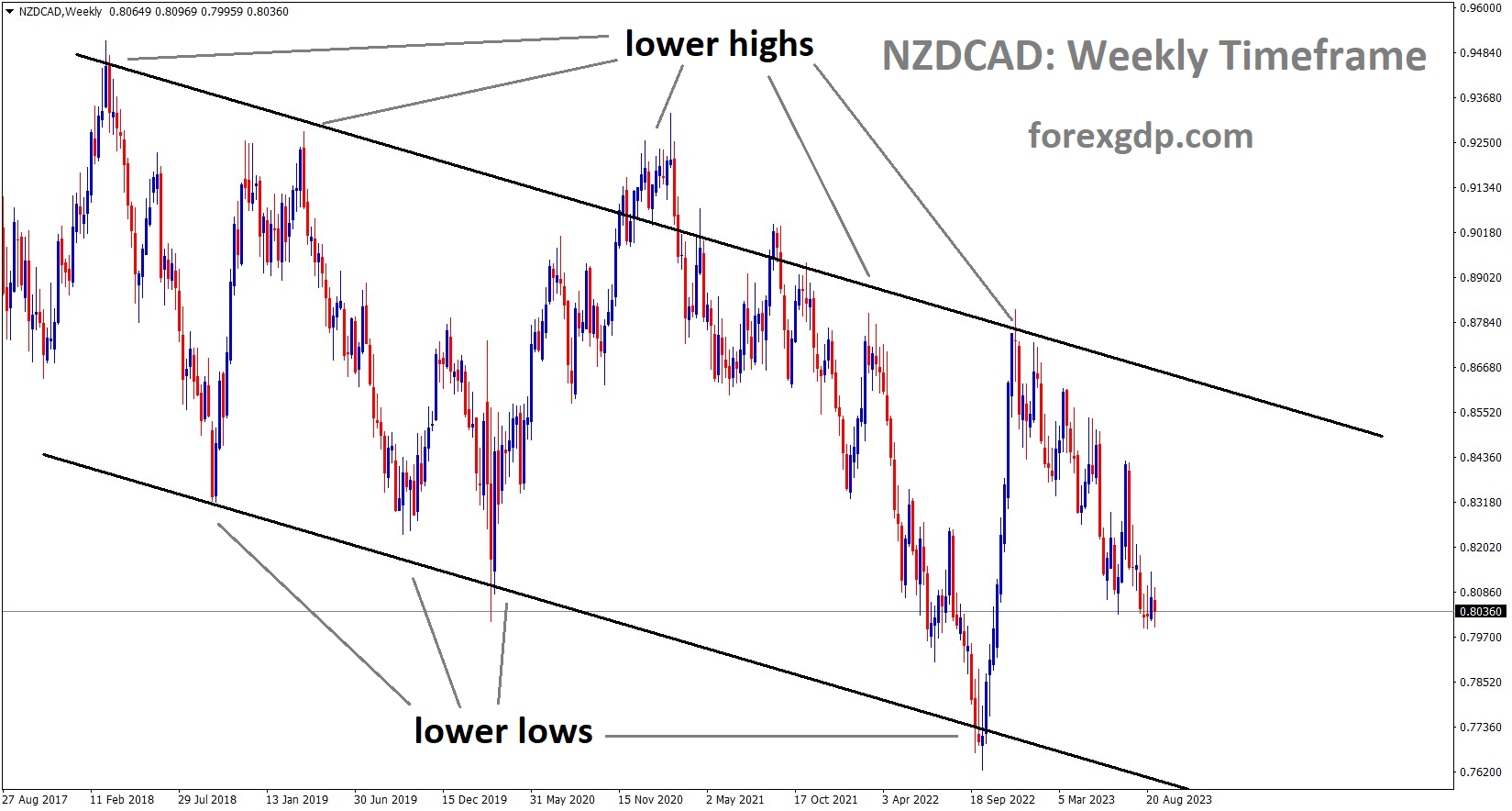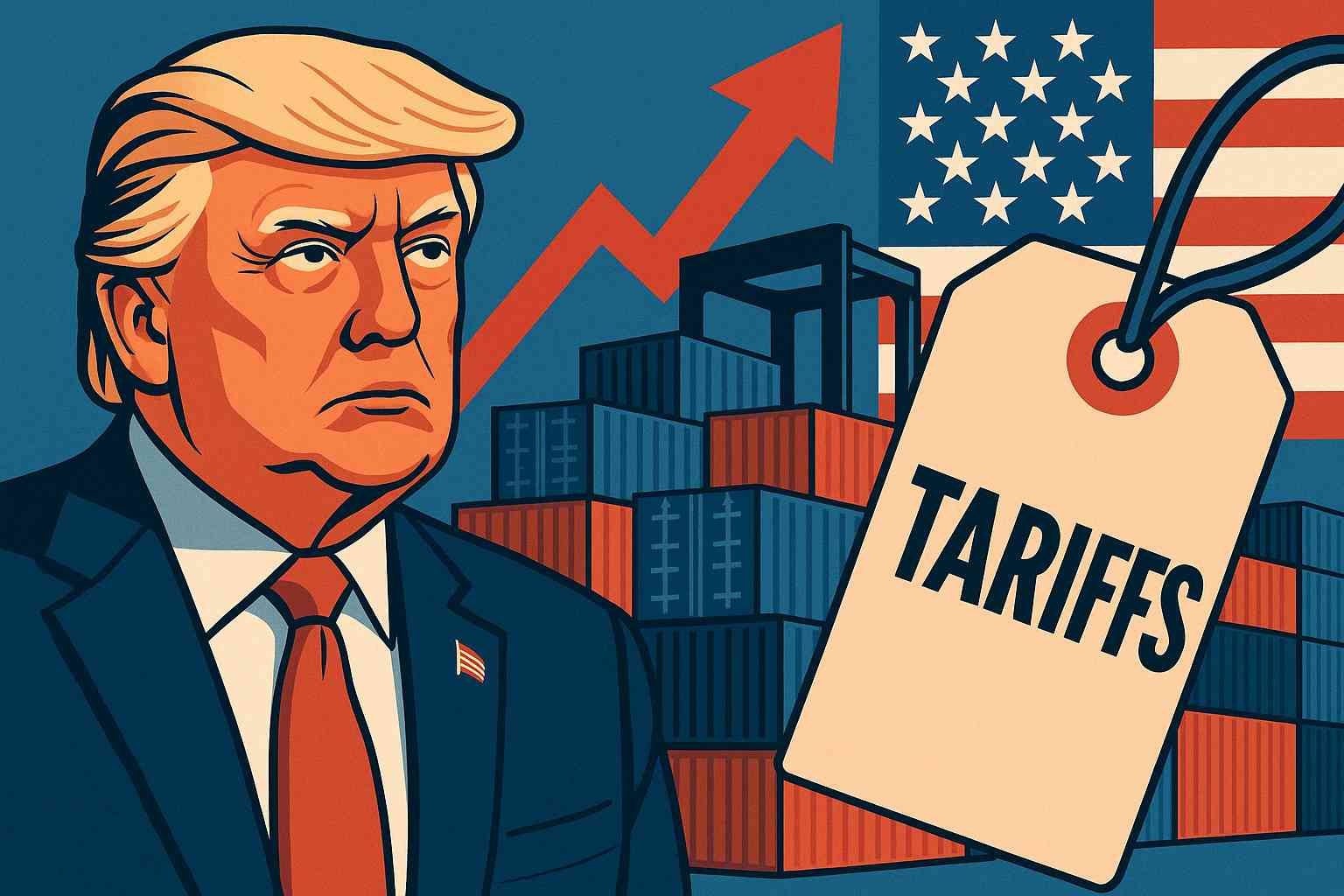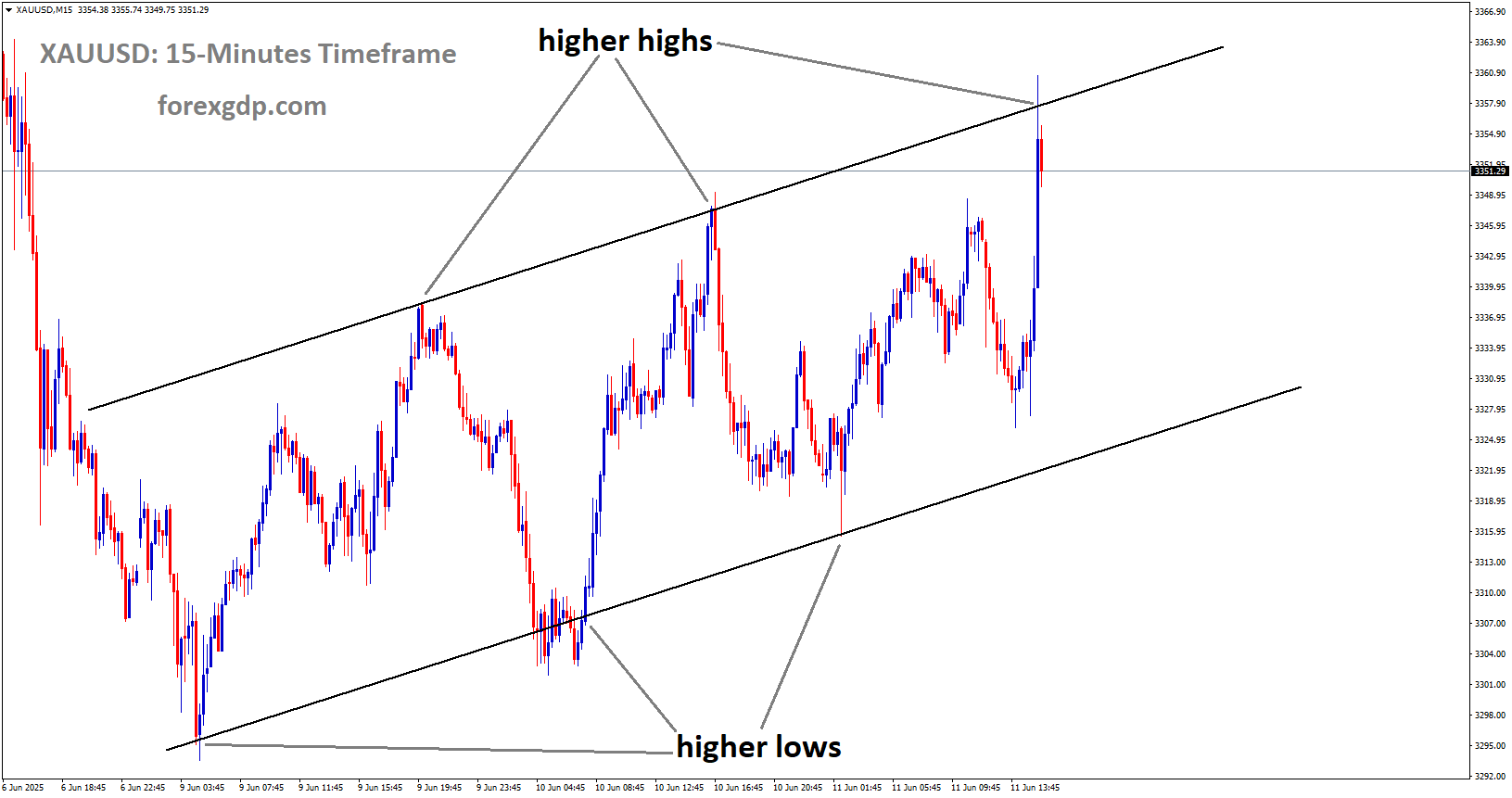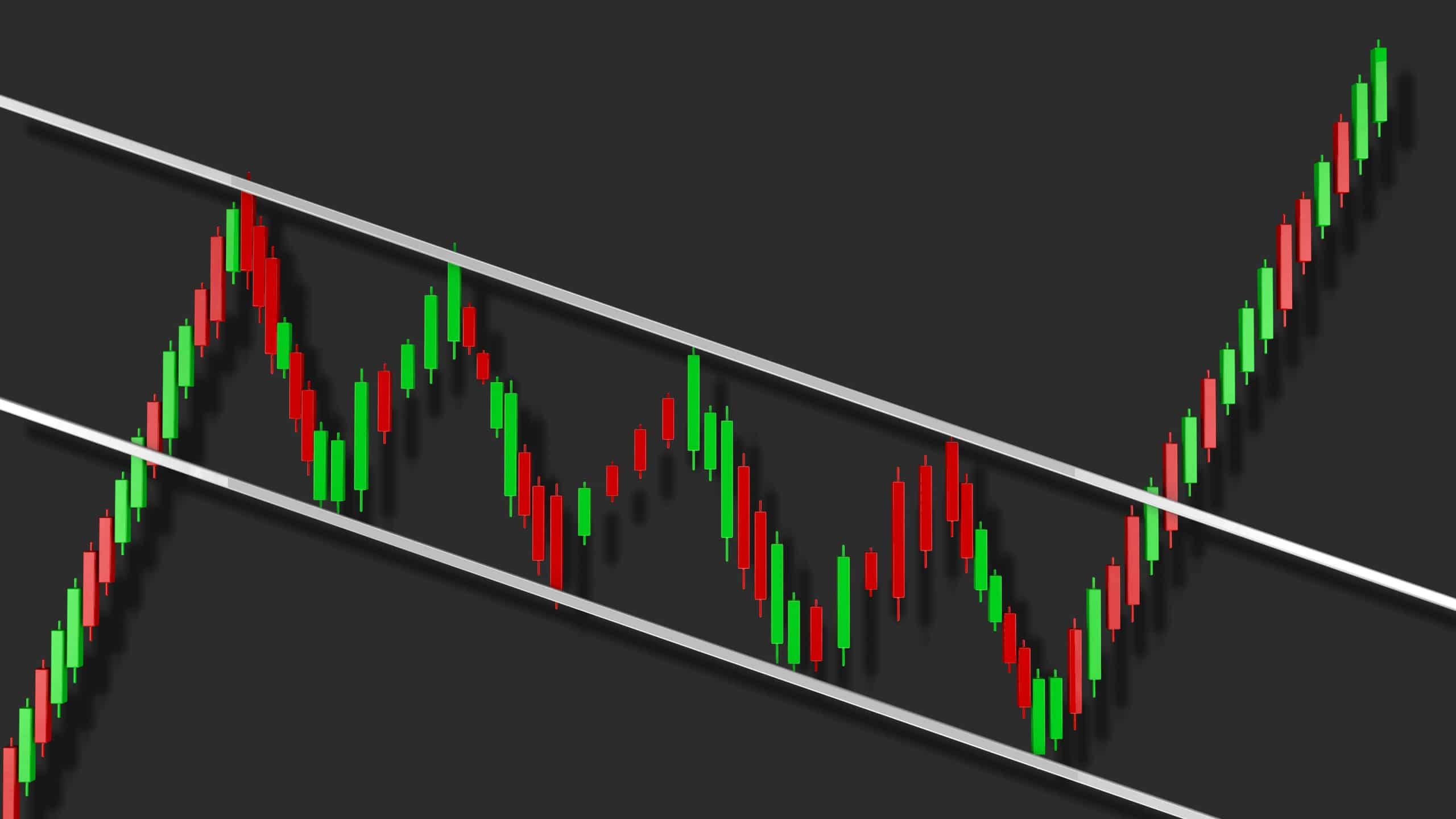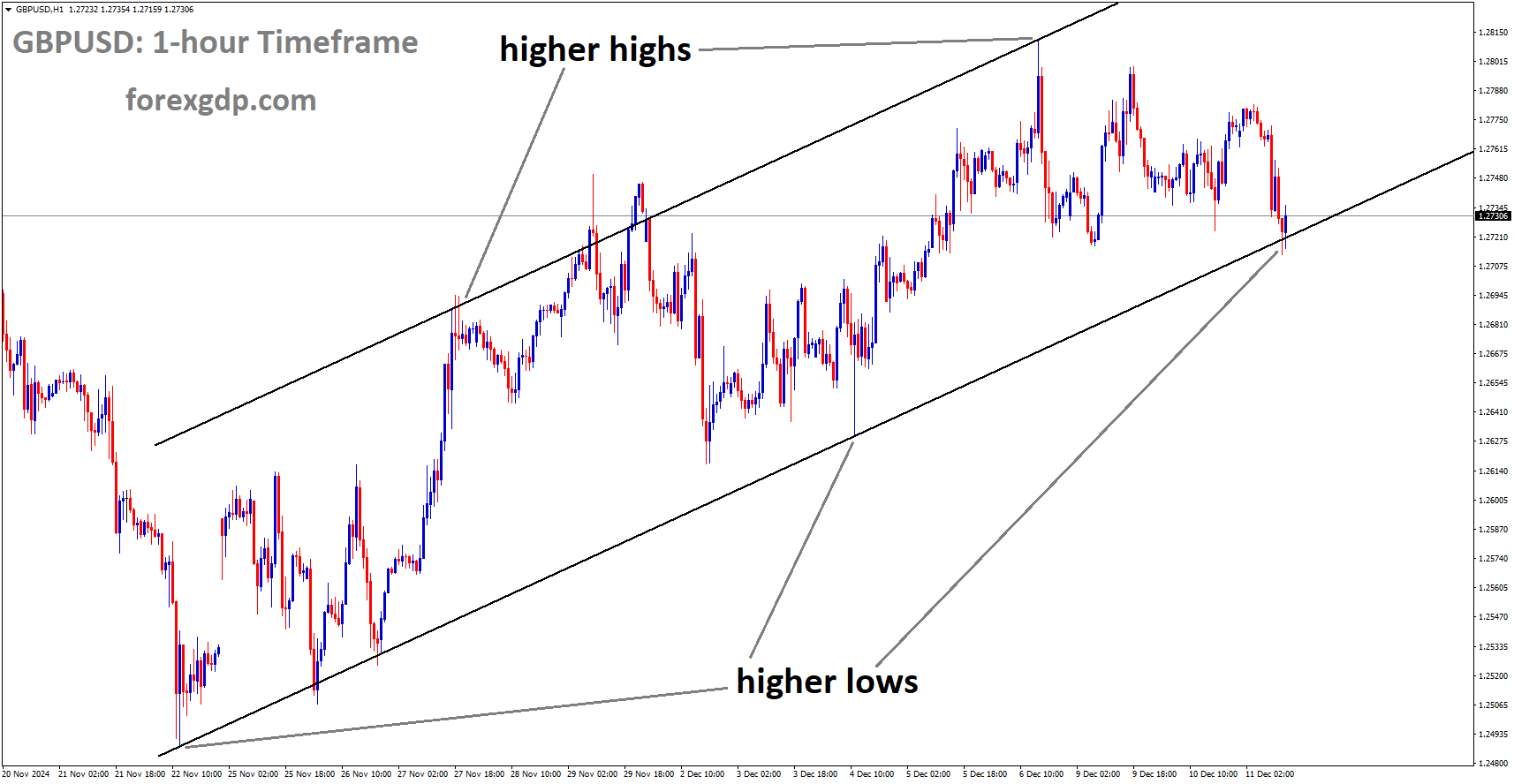USDCAD is moving in the Descending triangle pattern and the market has reached the lower high area of the pattern
Canada’s economic landscape has taken an unexpected turn with the second-quarter contraction of its GDP at an annualized rate of 0.2%. This contraction has raised concerns about the possibility of a recession and has significant implications for the country’s monetary policy, especially the Bank of Canada’s interest rate decisions. In this in-depth analysis, we will delve into the various factors contributing to Canada’s economic challenges, the consequences of this GDP contraction, and the expectations and considerations surrounding future interest rate adjustments.
I. A Surprising Contraction

1.1 Second-Quarter GDP Shock
The Canadian economy’s second-quarter performance took experts by surprise as it reported an unexpected annualized GDP contraction of 0.2%. This decline was significantly lower than both the Bank of Canada’s initial forecast for a 1.5% annualized GDP growth and the 1.2% gain expected by analysts.
The abrupt deviation from projections highlights the complexity and volatility of the current economic environment. The Bank of Canada’s anticipation of a robust recovery now appears overly optimistic, causing analysts and policymakers to reassess their strategies.
1.2 June GDP Decline
The GDP contraction in June, which was in line with expectations, played a pivotal role in the second-quarter’s negative performance.
The decline in GDP was driven by several key factors:
Impact of Wildfires: The Canadian wildfires in June had adverse effects on multiple industries, including mining and quarrying, as well as rail transportation. These disruptions had a cascading impact on the overall economic output for the month.
EURCAD is moving in the Descending channel and the market has rebounded from the lower low area of the channel
Housing Investment and Inventory Accumulation: A significant part of the quarterly slowdown can be attributed to declines in housing investment and smaller inventory accumulation. This suggests a reduction in economic activity within these sectors, adding to the overall economic challenges.
Slower International Exports and Household Spending: Another critical element of the second-quarter contraction was the slowdown in international exports and household spending. Reduced international demand and cautious consumer spending further compounded the economic downturn.
II. Implications for Monetary Policy

2.1 Anticipated Rate Stability
The unexpected economic contraction has led to a widespread expectation that the Bank of Canada will maintain its current interest rates. A consensus among experts suggests that the central bank is unlikely to implement further interest rate hikes in the near term.
With 31 out of 34 economists polled by Reuters expecting no change to the central bank’s overnight rate at the upcoming meeting, it becomes evident that the economic slowdown has shifted the focus away from inflation concerns toward growth considerations. The central bank is expected to adopt a cautious approach to monetary policy, taking into account the fragile state of the economy.
2.2 Bond Yields and the Canadian Dollar
The bond market swiftly responded to the GDP contraction, with the yield on Canada’s 2-year bond, which tends to be sensitive to the Bank of Canada’s rate outlook, easing by 9.1 basis points to 4.555%. This downward movement reflects market participants’ expectations of a more stable interest rate environment.
GBPCAD is moving in an Ascending triangle pattern and the market has reached the higher low area of the pattern
The Canadian dollar also depreciated by 0.5% against the U.S. dollar, trading at 1.3574, or 73.67 U.S. cents. This depreciation is indicative of the currency market’s response to the economic challenges and uncertainty surrounding Canada’s economic trajectory.
2.3 A High-Interest Rate Environment
The contraction in the second quarter occurred against the backdrop of a high-interest rate environment. The Bank of Canada had hiked its benchmark overnight rate to a 22-year high of 5.0% in July. This marked the tenth interest rate increase since March of the previous year.
The central bank’s motivation for these rate hikes was primarily to combat high inflation levels, which had surged to a four-decade high of 8.1%, far exceeding the central bank’s 2% inflation target. However, the effectiveness of this strategy has been a subject of debate, as the subsequent economic challenges demonstrate.
III. Economic Slowdown Reasons
3.1 Housing and Inventory
One of the primary drivers of the second-quarter slowdown was the decline in housing investment, which recorded its fifth consecutive quarterly decrease in the three months ending in June. This decline was primarily led by a sharp drop in new construction and a fall in renovation activities.
The diminishing housing investment has broader implications for the economy, as it affects not only the construction industry but also related sectors such as real estate, mortgage lending, and consumer spending.
3.2 Exports and Household Spending
The slowdown in international exports and household spending further contributed to the second-quarter contraction.
Crude Oil is moving in an Ascending channel and the market has reached the higher high area of the channel
These two pillars of economic growth faced challenges during this period:
Slower Exports: The international trade sector experienced a slowdown in demand for Canadian products and services. Reduced exports can be attributed to both global economic conditions and supply chain disruptions, which have affected various industries.
Cautious Household Spending: Canadian consumers exhibited caution in their spending habits, which was influenced by the high-interest rate environment. As borrowing costs increased, consumers reduced their expenditures, impacting various sectors of the economy.
IV. Assessing the Recession Risk

4.1 Expert Opinions
The unexpected GDP contraction in the second quarter prompted experts to speculate on the possibility of Canada entering a recession. Stephen Brown, Deputy Chief North American Economist for Capital Economics, stated, “The Canadian economy may already have fallen into a modest recession.”
This perspective underscores the severity of the economic challenges Canada faces and highlights the need for a measured response from policymakers. As the economic landscape evolves, the balance of risks has shifted from inflation to growth concerns, necessitating a reassessment of monetary policy priorities.
CADJPY is moving in the Ascending triangle pattern and the market has reached the resistance area of the pattern
4.2 Central Bank’s Stance
The Bank of Canada finds itself in a delicate position, with the unexpected economic contraction complicating its policy decisions. While the central bank has successfully tackled inflation through interest rate hikes, the consequences for economic growth are now apparent.
The central bank must carefully navigate this terrain, considering the implications of its actions on both inflation and the broader economy. Striking the right balance between controlling inflation and preventing a recession presents a significant challenge.
V. The Housing Conundrum

5.1 Housing Investment Decline
The decline in housing investment, particularly the sharp drop in new construction and renovation activities, has been a notable contributor to the economic challenges faced by Canada. The housing sector plays a pivotal role in the nation’s economy, impacting various related industries and employment.
The continuous contraction in housing investment raises concerns about the sustainability of this trend and its consequences for the broader economy. Policymakers must monitor this situation closely to mitigate potential risks.
CADCHF is moving in the Box pattern and the market has rebounded from the horizontal support area of the pattern
5.2 Implications for Household Spending
The high-interest rate environment has influenced consumer behavior, leading to a reduction in household spending. With borrowing costs on the rise, consumers have become more cautious in their expenditures, particularly for rate-sensitive goods and services.
This shift in consumer behavior has broader implications for businesses across various sectors, and it underscores the importance of carefully managing interest rates to maintain a healthy balance between inflation control and economic growth.
VI. GDP Trends in Q3
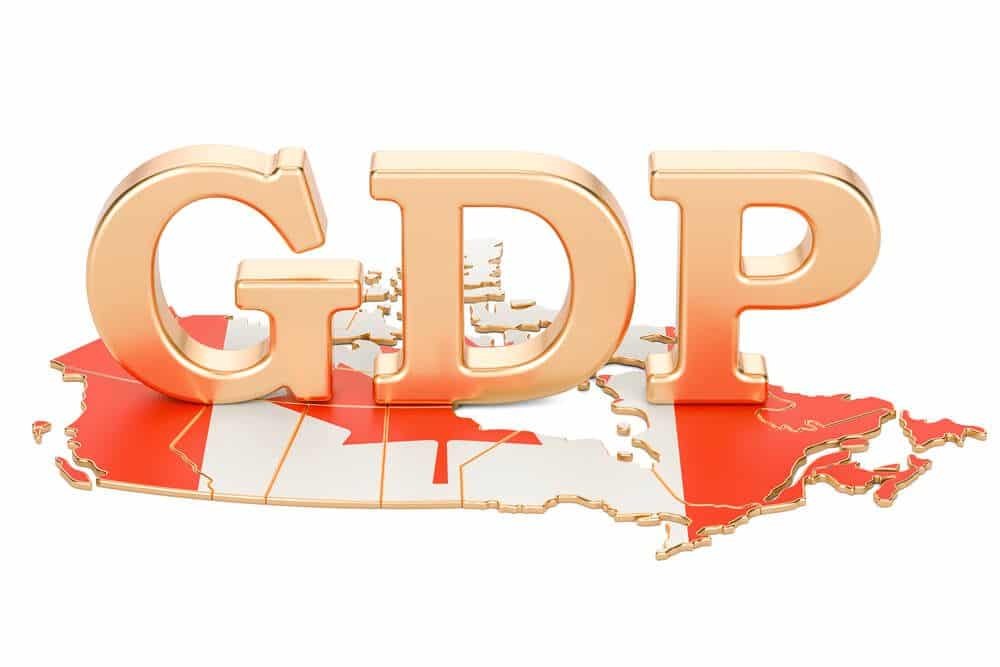
6.1 A Weak Start to H2
Preliminary data for July suggests that Canada’s economic challenges are extending into the second half of the year. Despite the hope for a rebound, the economy is showing signs of stagnation, with increases in certain sectors offset by decreases in others.
The economic challenges faced in the second quarter have set a weak foundation for the third quarter. Ongoing disruptions from wildfires and mixed economic survey data further complicate the outlook for Q3.
6.2 Prospects for Q3
Maintaining positive GDP growth in the third quarter presents a significant challenge. Given the ongoing disruption caused by wildfires in August and the weakness indicated by some economic surveys, the forecast for quarterly GDP is uncertain.
Continued vigilance and careful economic management will be essential to navigate these challenges and steer the economy toward stability and growth.
VII. Bank of Canada’s Monetary Policy Decision
7.1 Economic Impact of Rate Hikes
The effectiveness of the Bank of Canada’s interest rate hikes in controlling inflation is evident. However, the unintended consequences on economic growth and consumer behavior have raised concerns.
Consumers have adapted to the high-interest rate environment by allocating a significant portion of their disposable income to servicing debt, potentially dampening consumer spending. This phenomenon highlights the complexity of monetary policy and the need for a nuanced approach.
AUDCAD is moving in the Descending channel and the market has reached the lower high area of the channel
7.2 Predictions for Upcoming Rate Decision
As Canada grapples with the unexpected GDP contraction and its implications, experts and market participants are closely watching the Bank of Canada’s next move. The widespread expectation is that the central bank will adopt a cautious stance and maintain its current interest rates.
The delicate balance between controlling inflation and nurturing economic growth is at the forefront of policymakers’ minds, and any decision will need to carefully consider both factors.
VIII. The Appeal for Rate Halt
8.1 B.C. Premier’s Appeal
British Columbia Premier David Eby’s appeal to halt further interest rate hikes reflects the concerns of many Canadians. Eby emphasizes the “human impact” of rate hikes, particularly on families struggling with the rising cost of living.
Eby’s plea underscores the need for policymakers to take into account the real-world consequences of their decisions and to consider alternative ways of addressing inflation without inflicting unnecessary pain on households.
NZDCAD is moving in the Descending channel and the market has fallen from the lower high area of the channel
8.2 Political Responses
Federal leaders have also voiced concerns about the impact of interest rate hikes on the cost of living, particularly regarding grocery prices and housing affordability. The rate hikes have exacerbated the challenges in the housing market, making it harder for developers to build new homes and increasing rental costs.
These concerns highlight the importance of a coordinated approach to address inflation and affordability issues, taking into account the broader economic context.
IX. Conclusion
In conclusion, Canada’s economic challenges are multifaceted, with the unexpected GDP contraction being a significant turning point. The delicate balance between controlling inflation and fostering economic growth has become more pronounced, necessitating a nuanced approach to monetary policy.
The decline in housing investment, cautious consumer spending, and ongoing disruptions all contribute to the nation’s economic uncertainties. As Canada navigates this complex economic landscape, policymakers must prioritize the well-being of citizens and the stability of the broader economy in their decision-making processes.
The Bank of Canada’s next interest rate decision will be a critical milestone in shaping the country’s economic future. Vigilance, adaptability, and a focus on both inflation control and sustainable growth will be key to overcoming the current challenges and ensuring a more stable and prosperous economic outlook for Canada.
Don’t trade all the time, trade forex only at the confirmed trade setups.
Get more confirmed trade setups here: forexgdp.com/buy/

